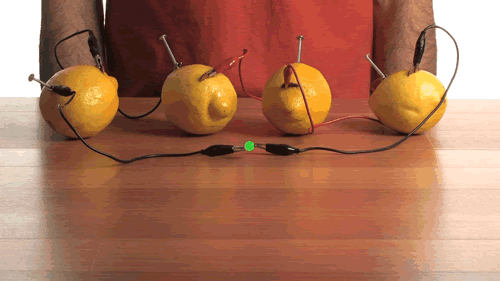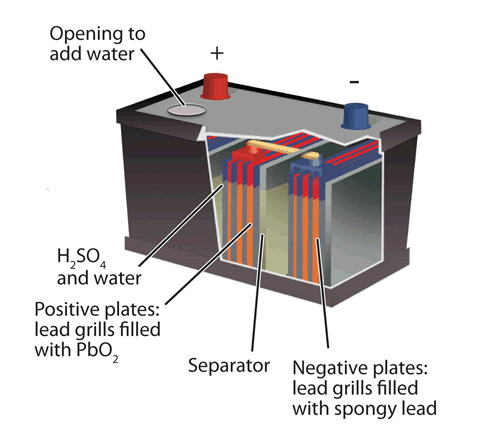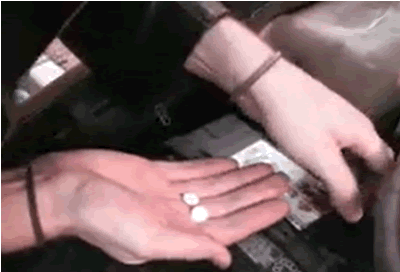Includes affiliate links that help offset our expenses at no cost to you.

“Dead, it’s dead”, you’re angry prepper friend says.
“What’s dead?” you ask, still in a happy mood after rappelling off the cliff face.
“The battery is dead”, he adds with obvious frustration. “We are frickin’ 14 miles from nowhere and the Jeep won’t start.”
“Don’t you carry a spare battery in your BOB*”. (Prepper TLA* for “Bug Out Bag” *TLA – “Three Letter Acronym”)
“You can’t – it’s way too heavy!! Don’t you troll the prepper forums to learn about this stuff?”, he says with obvious authority for all things ‘internet’.
You contemplate his question, then with an air of curiosity you ask, “I thought you guys prepared for anything and even tested your gear before you left the house? What about a portable jump starter?”
“Didn’t bring one! Dang it man, I have to be home before midnight and it is a 6 hour drive!”, he pleads.
“Ok, Ok – how about a can of coke and a bottle of aspirin, Prep, do you have that?”, you finally ask.
“Come on! What is that for?”
“The headache you’re gonna give me if you don’t shut up, but I thought I would fix the battery”, you retort.
He stares at you with a perfect balance of frustrated yin and awestruck yang – then he turns and waddles away while squealing a high pitch expletive.
“Fine”, you say quietly, “I’ll find it myself”. You stroll to the back of the Jeep, wiggle out of your climbing harness and toss it on the massive pile of gear. Then you pry the top of the cooler slip a can of coke out. You plunge your arm into the pile of gear and manage to extract the small first aid kit. You unzip the kit, find the full bottle of expired aspirin and whisper, “Excellent”.
Walking around to the front of the Vehicle, you notice Prep has returned. He says, “You are the most unprepared jackass I have ever met.” You smile and prop the hood open. You ask Prep to get a screw driver and a pair of needle nose pliers.
First, you check the connection of the battery clamps to the post to ensure a good connection and no corrosion. They are tight but quite corroded. You pop open the can of coke, take a drink then pour it on the battery clamps and posts.
This is what the process looks like. . .
Prep returns with the tools, you glance at him with a knowing smile. He grimaces and looks at the fizzy mess as the corrosion melts from the posts and clamps. You check the clamps for cracks or damage. They look OK.
Now, you have to get the battery to produce enough Volts and Amps to start the vehicle. Luckily, you have packed the right tool to do just that. This tool doesn’t weigh anything, it provides its own maintenance and improvements, adds more of itself often and is more valuable than any other piece of gear that you carry . . . knowledge.
Let’s review what we know about batteries.
A battery is created when two different metals or carbon rods (called electrodes) are placed in an electrically conductive medium (called an electrolyte). Stick a penny (copper-plated zinc) and a nickel (nickel/copper alloy) into a lemon, and you have a battery. Put a copper wire and aluminum wire into a jar of urine, and you have a battery. This you know from learning the concept of a battery in 8th grade science.
Prep is now looking at you with anticipation and curiosity. You contemplate your situation while drinking some of the coke.
Different metals react at different rates (i.e., create charged particles) with the electrolyte. This means one electrode will give up electrons at a faster rate than the other, creating an imbalance of the charge distribution in the electrolyte. Bits of charged electrolyte move from one electrode to the other (direction is positive to negative) to eliminate this imbalance. When these charged bits make contact with the negative electrode, they give up their electrons, and electricity is created. As this occurs, the lead electrodes become more chemically alike, the electrolyte becomes less active, and the voltage drops until the battery can no longer deliver the necessary voltage. Stimulating the electrolyte through some form of additive adds chemical energy to the system and may provide a brief energy boost to the battery. Feeding an electrical current back into the battery restores the chemical difference between the electrodes and recharges the battery (this doesn’t work for all batteries, but it works for car batteries).
Most car batteries are “lead acid” batteries. Lead-acid batteries are made up of plates of lead and separate plates of lead dioxide, which are submerged into an electrolyte solution of about 38% sulfuric acid and 62% water. This causes a chemical reaction that releases electrons, allowing them to flow through conductors to produce electricity.
You look at Prep with resolved eyes, “all we have to do is change the acid in the battery so that it will react with the lead and create electricity right?”
Prep says, “Sure”
You continue thinking out loud, “So, recharging the battery involves either finding a way to stimulate the electrolyte, or finding a way to feed electricity back into the battery.”
Prep says, “I guess so?”
“We could pour some cola into the battery. Start the car after a few minutes. Of course, you’ll have to replace the battery because we’ve destroyed it, but at least you’ll be home by midnight.”
Prep says, “it is an old battery, it doesn’t matter much. But won’t we need a battery to run the Jeep until we can buy a new one?”
“Ah yes, Old Prep, that could be a problem”
You continue, “We could. . . Remove the fluid from the battery. The Squeeze a dozen limes in the battery.”
“We don’t have limes”, Prep adds. “Right” you respond.
“We could also drink soda and urinate into the battery. Fill the remainder of the battery with the water. Wait 9 hours and put the battery back in.”
“Gotta be home in 12 hours – 6 hour drive”, Prep responds. “Right”, you confirm.
“Saliva, potato chip brine, hydrogen peroxide all would work in theory”, you mention.
While all this does works in theory, you have three disadvantages to this basic approach.
- Though the “theory is sound”, it generally won’t work in practice for a variety of reasons. The main reason is getting the proportions right.
- You can try them, but if they don’t work, you have likely ruined the battery and eliminated any other opportunity of getting the vehicle started.
- Several proposed additives run a real risk of blowing up the battery.
There is, however, one additive that you took out of the first aid kit that avoids these disadvantages.
The aspirin.
We can pry off the cap, pull any rubber stopper vents blocking the cells in the battery (there are 6 cells at 2 volts each). Put two tablets of aspirin in each battery cell and wait no more than 1 hour (the acetylsalicylic acid combines with the sulfuric acid to get off one more charge.) You can pry the cell covers off with a screwdriver even on most maintenance-free batteries.
As bizarre as this sounds, aspirin will often work depending on the degree of discharge of the battery. It is a reasonably safe approach and usually good for one more engine turn. Be warned that adding aspirin will shorten the battery life, as the aspirin will react with the sulfuric acid to form acetic acid. Good for a boost, but bad for the innards of the battery. Assuming you add no more than a couple of aspirins per cell, it shouldn’t cause significant damage nor preclude additional efforts if it fails to work. So there is at least one safe, viable way to have a reasonable shot at getting the vehicle restarted by stimulating the electrolyte.
You explain this to Prep. He doesn’t seem convince, but your options are limited so he says, “Well, let’s see if it works.”
You open the battery, crush several aspirin from the first aid kit, being careful to keep them segregated so there are two crushed aspirin for each cell. Then you put the powder in the battery, and add bottled water to fill it to the proper level. The acetylsalicylic acid from the aspirin will combine with the battery acid and increase the charge in the battery, and the water will help restore the electrolyte in the battery.
You replace the caps, gather your tools, finish the coke and jump in the Jeep. Turn the key and the engine starts right up. Though, we may need a new battery soon.
Prep hops in, points the way and says, “Let go.” You look at him with anticipation and realize, he doesn’t care, he just wants to get home. You smile, turn away to laugh, push the shifter in gear and take off. Leaving Prep’s BOB at the parking area. . .
Interested in learning more about improvising in the wilderness? Expeditions need improvisation to be successful.
Til next time, remember, “Knowledge Weighs Nothing”.




